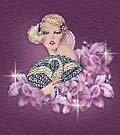 |
|
 Gift Ideas VOGUE NIPPON 
©1997- 2014 All rights reserved.
| ||||||||||||||||||||||||||||||||||||||||||||||||||||||||||||||||||||||
antique jewelry: [ vintage costume jewelry: (figurals | designer | silver | unsigned | accessories), estate jewelry | 1910 to 1930's | Art Deco jewelry | Victorian & Edwardian jewelry ] antique cameos & antique cameo jewelry archives vintage jewelry designers: [ A - H | I - Q | R - Z ] about us | bookshelf | comments | contact us | gift registry | help desk jewelrygrams© | other sites |privacy policy | reminder service | requests guarantee | layaway | ordering | payment | shipping fees top of page | home | site map Antiquing On Line Interested in putting your items for sale on our site? Copyright © 1997-2014 Antiquing On Line. | ||||||||||||||||||||||||||||||||||||||||||||||||||||||||||||||||||||||||



